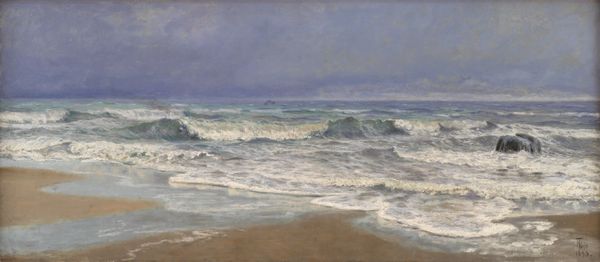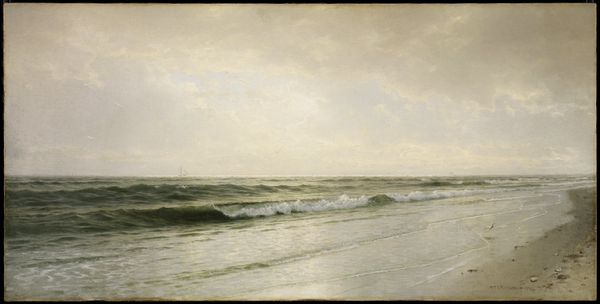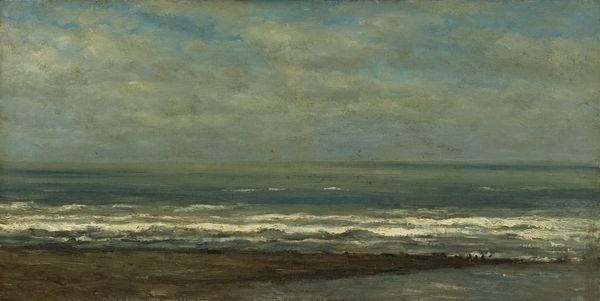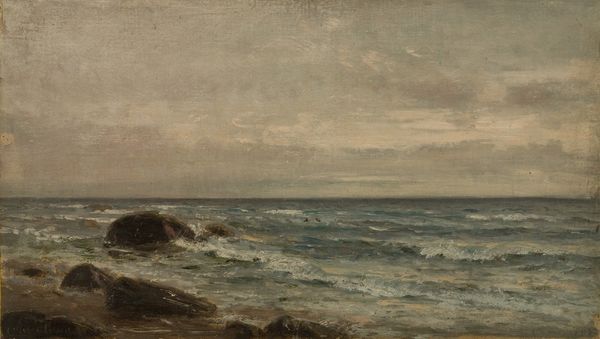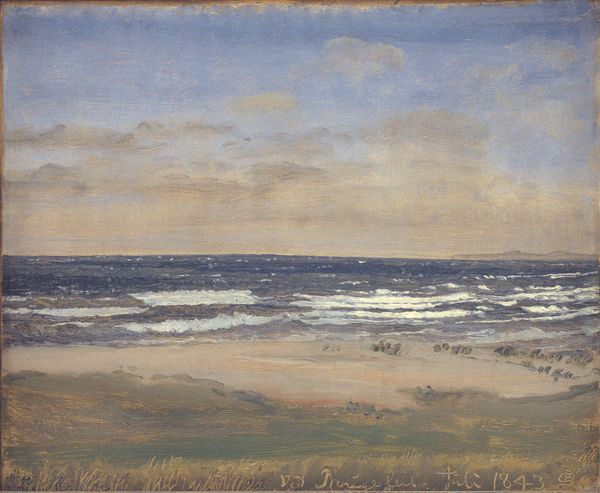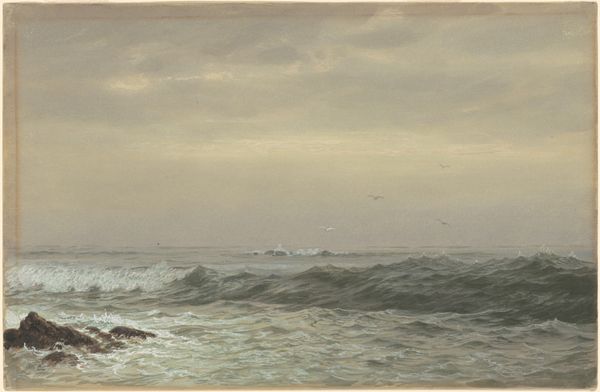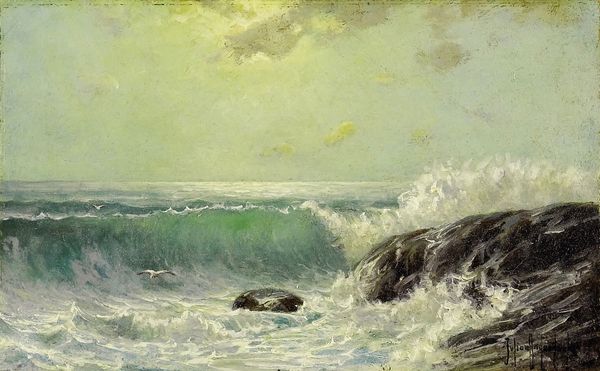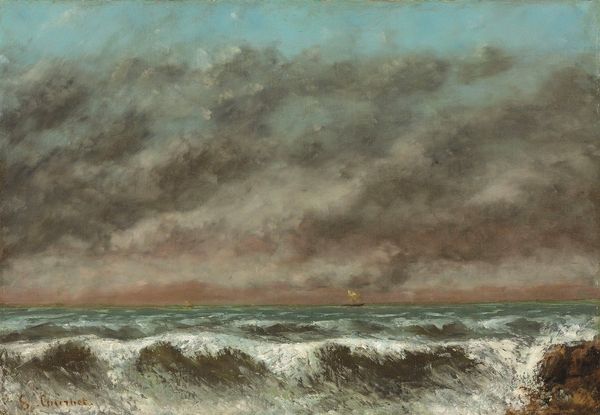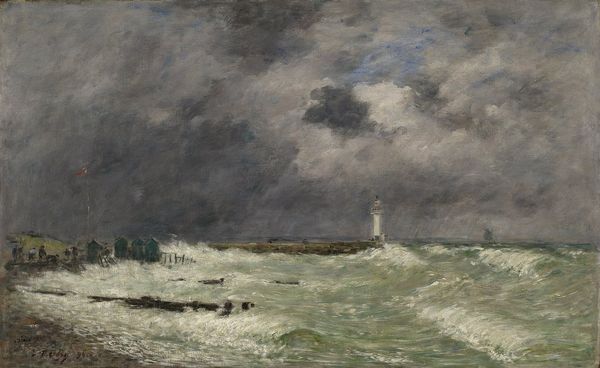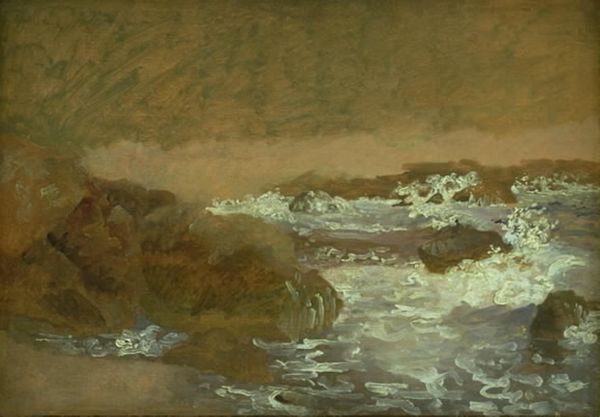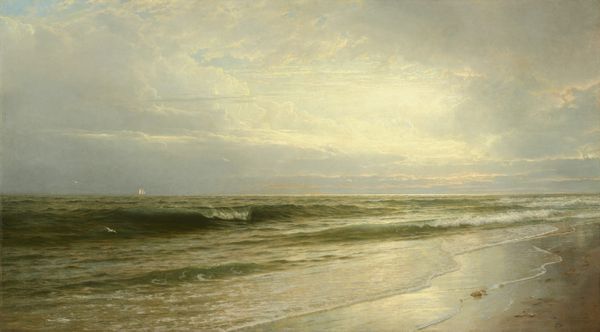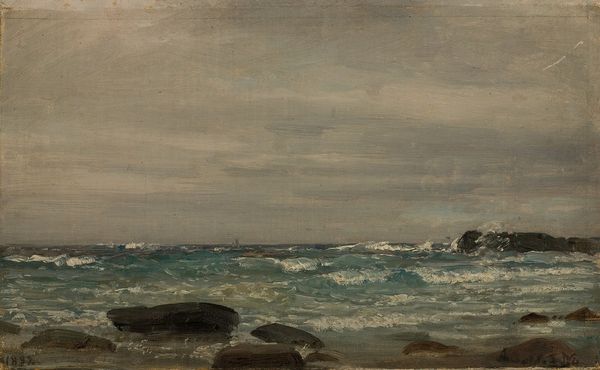
Dimensions: 33 cm (height) x 49 cm (width) (Netto), 47.5 cm (height) x 62 cm (width) x 9.2 cm (depth) (Brutto)
Curator: Ah, yes, Krøyer’s “Seascape, Skagen,” created in 1882. An evocative oil painting reflecting the stark beauty of the Danish coast. Editor: Immediately, I notice the almost monochromatic palette. So many shades of grey. There’s a real weight to it. The impasto of the waves suggests Krøyer wasn't interested in mere representation, but really digging into the physicality of water. Curator: Skagen held such significance for Krøyer and many of his contemporaries. This small fishing village became a hub for artists drawn to its unique light and raw nature, serving as a sanctuary from industrial progress and, in some ways, echoing the earlier allure of places like Barbizon. What does the sea itself convey to you here? Editor: A powerful connection to labor, certainly. We see no people, but the wildness suggests the daily struggle of the fishermen who risked their lives on that water. And thinking about materials, the oil paint itself transforms; thick and churning like the sea it depicts, extracted, processed, shipped – a whole system embedded in the surface. Curator: It resonates, doesn't it, with the romantic ideal of nature's sublime power? This seascape reminds us of mankind’s small place in the face of the immense forces surrounding us, something very akin to Caspar David Friedrich. Yet, the impressionistic technique – the plein-air execution – sets it apart, embracing the fleeting moment and the atmospheric conditions specific to that time and place. Editor: Precisely. He captured something beyond the purely visual – a feeling, a tangible presence. I imagine standing there, smelling the salt, feeling the damp air…And it begs the question: How was paint supplied to Skagen? Was there a specific artist's color merchant, or were these materials brought from elsewhere, contributing to Skagen’s transformation? Curator: An intriguing line of inquiry! It highlights how the creation of art isn’t divorced from broader economies and practical considerations. The seagulls overhead—the birds' timeless symbolism as guides, perhaps, or free spirits—are particularly fascinating. Editor: I see them more as scavengers, preying on what the sea gives up, or what the fishermen discard. A reminder of nature’s pragmatism as much as its beauty. The very process of depicting a seascape also involves resource consumption; brushes, solvents, the linen for the canvas…everything contributes to the artwork’s story. Curator: Your emphasis is a great reminder of all that surrounds even what appears to be a simple seascape. Editor: Exactly! Krøyer offers not just a vision but a potent trace of social, historical, and environmental forces.
Comments
No comments
Be the first to comment and join the conversation on the ultimate creative platform.
